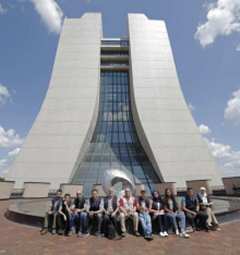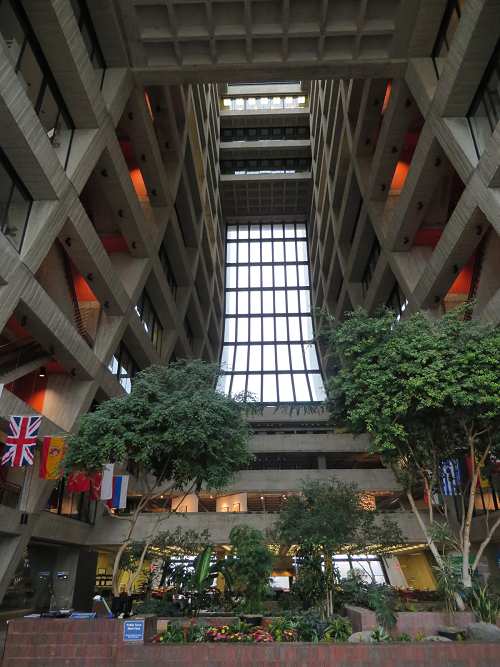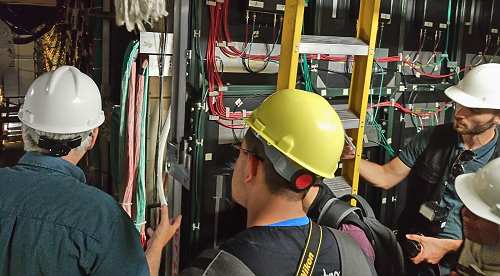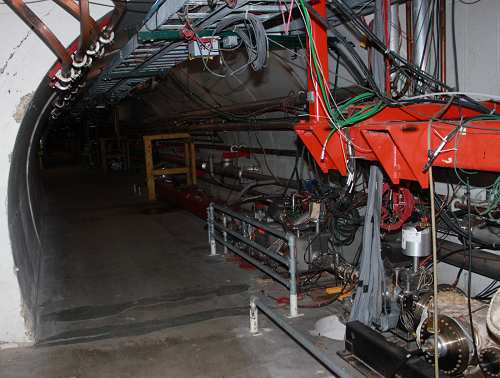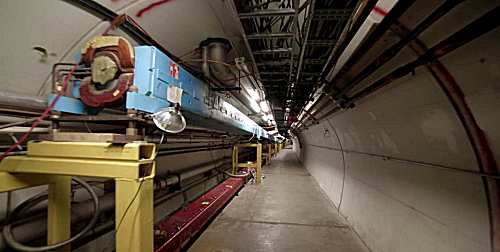Day 7: Visit to Fermilab: Hadrons & Bisons Cohabiting
A trip to the emblem of US science
|

Group picture at the entrance of Fermilab. |
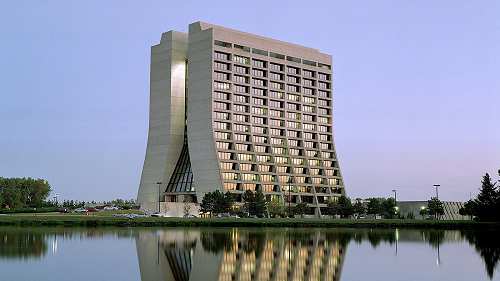
The Wilson Hall, the beating heart of Fermilab, is often taken as the emblematic symbol of science in the US.
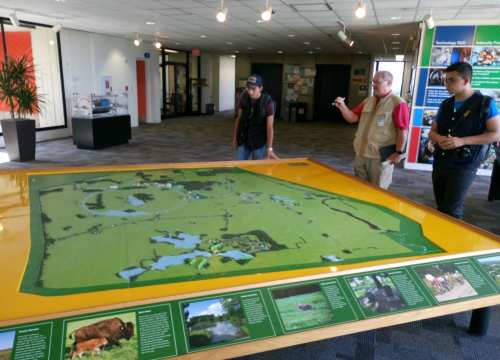
Fermilab extends across 27.5 square km and above the main underground accelerator is a natural reserve. |
|
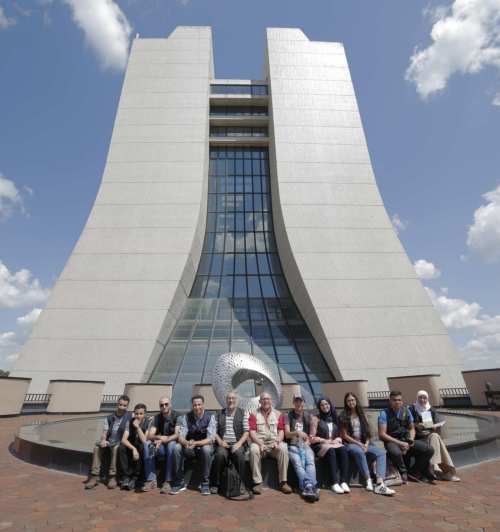
Taking a group picture in front of the imposing futuristic Wilson Hall. In the back is the Moebius strip sculpture designed by R.R.Wilson himself. |
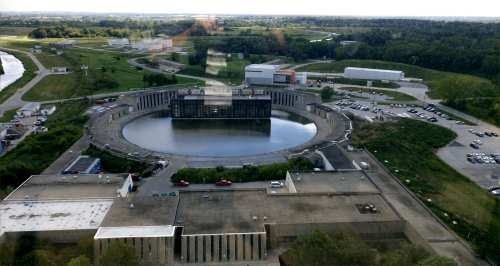 Fermilab is situated in the Western suburbs of Chicago at Batavia, Il. Here's a view on the booster ring producing 8GeV protons which then go to the Main Injector Ring. We see also the Muon g−2 building (Measuring the anomalous magnetic dipole moment of the muon) just in the back, slightly at right with its 600-ton magnet brought from Brookhaven.
Fermilab is situated in the Western suburbs of Chicago at Batavia, Il. Here's a view on the booster ring producing 8GeV protons which then go to the Main Injector Ring. We see also the Muon g−2 building (Measuring the anomalous magnetic dipole moment of the muon) just in the back, slightly at right with its 600-ton magnet brought from Brookhaven.
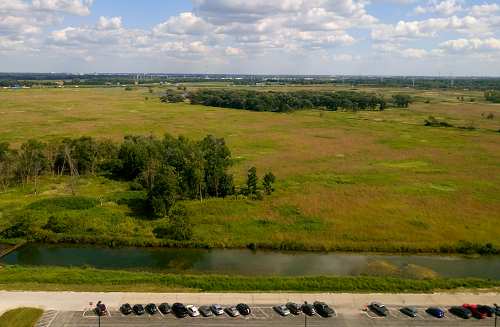 |
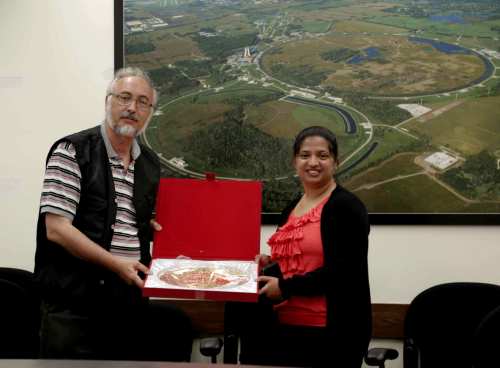
Handing a small gift of appreciation to Hema Ramamoorthi, the assistant to the Fermilab's Director.
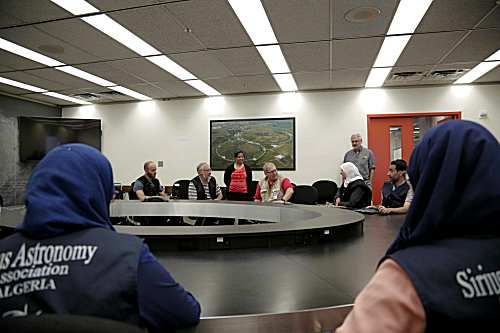 |
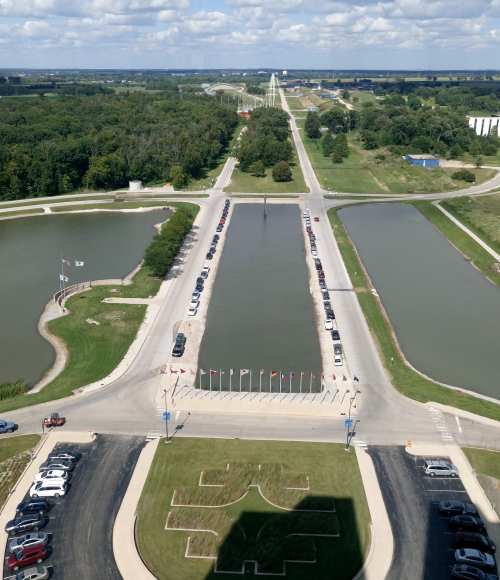
Fermilab is one of the most famous laboratories in the US and in the World, and it is home to what was the most powerful accelerator before the entering into service of the LHC at CERN. It is dedicated to high-energy particle physics, the field of physics which studies the smallest components of matter. A view from the last floor.
|
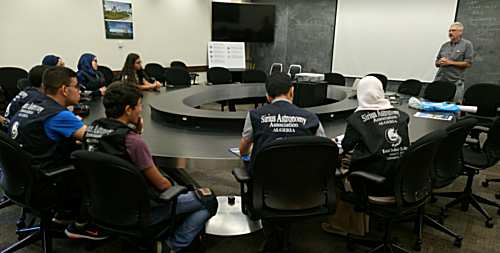
A lecture by Stephen Kent, former head of the Experimental Astrophysics Group and actual Deputy Head, Scientific Software Infrastructure Dept. at Fermilab. |
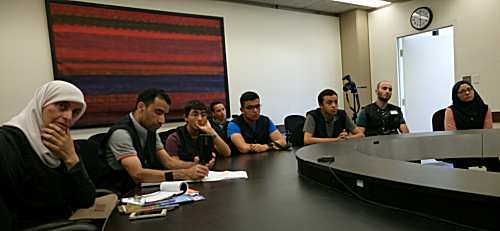
Listening carefully to the lecture |
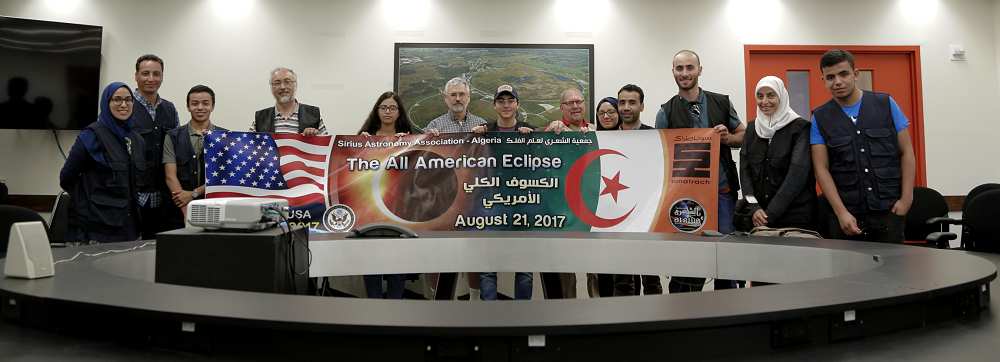 |
Visiting the Linear Accelerator LINAC at Fermilab |
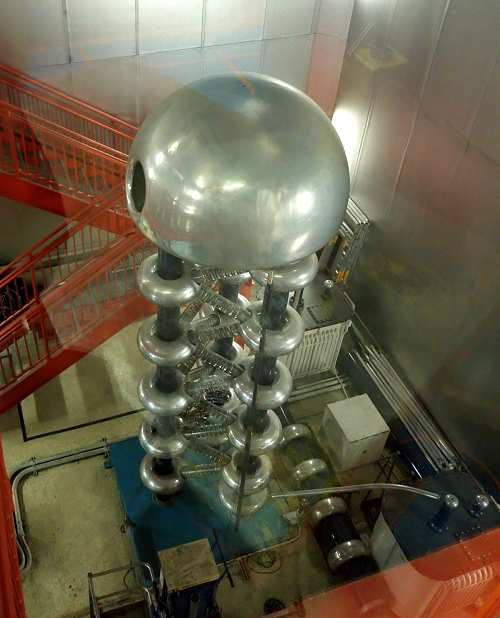
The Linac is a linear accelerator used to be a source of protons feeding various experiments and initially the Tevatron. It is thus a key Fermilab facility. Here's the old Cockcroft-Walton accelerator feeding the Linac. |
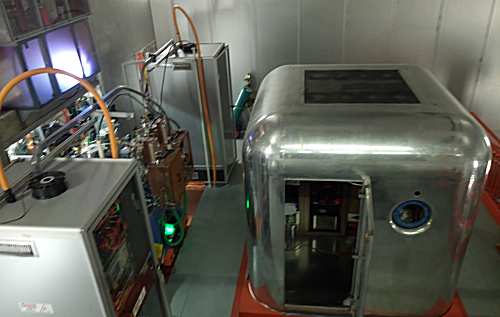 The two ion sources go to the electrostatic accelerator (left) before being fed to the Linac. Now this line of ion production has been put into retirement and a radio-frequency quadrupole, or RQF is used instead. Ultimately the Linac provides a 400MeV beam.
The two ion sources go to the electrostatic accelerator (left) before being fed to the Linac. Now this line of ion production has been put into retirement and a radio-frequency quadrupole, or RQF is used instead. Ultimately the Linac provides a 400MeV beam.
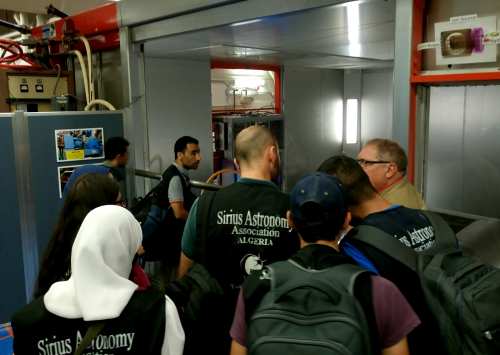
Entering the Linac area. |
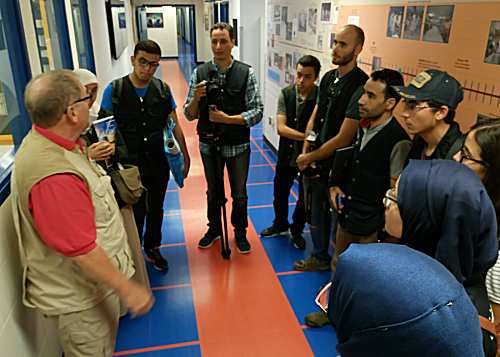
With our sympathetic guide Dan West
|
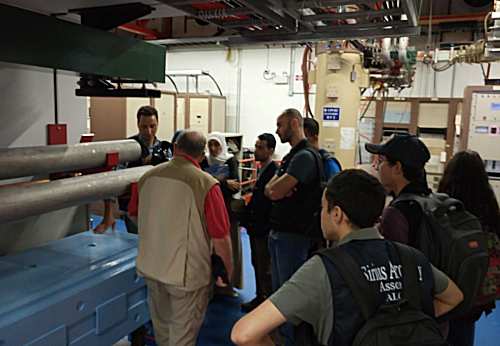
A model of a Linac section.
|
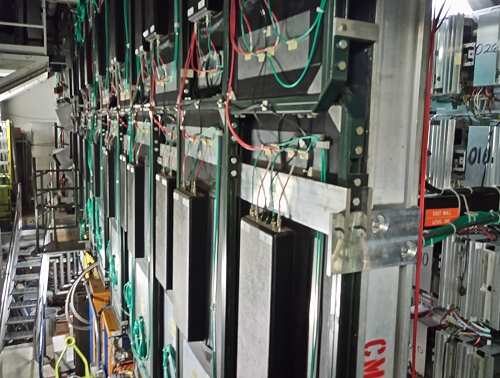
Tons of electronics and high precision equipment ...
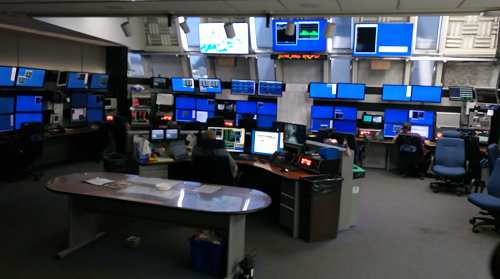
The main computer facility for the Linac. We only had the right to take one quick shot from a half opened door.
|
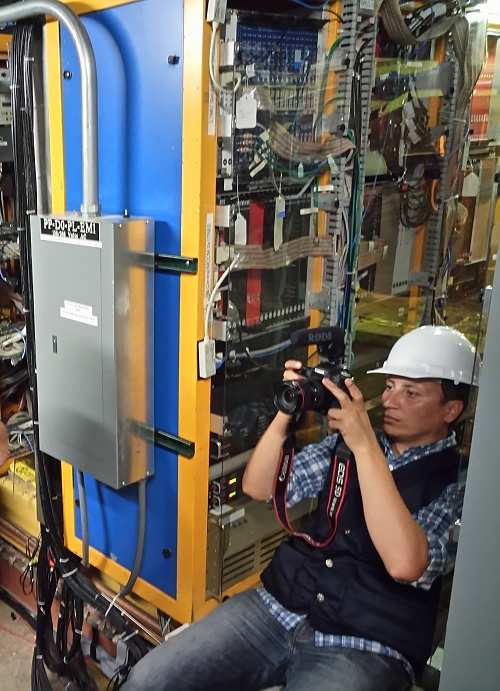
Younes taking a tight shot between electronic racks |
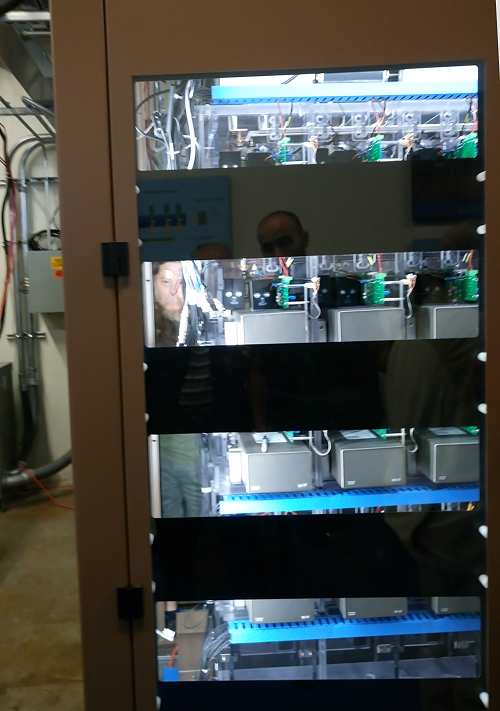
Cabinets of electronics stacked one above another. Can you spot the engineer intervening on the material? Then check here. |
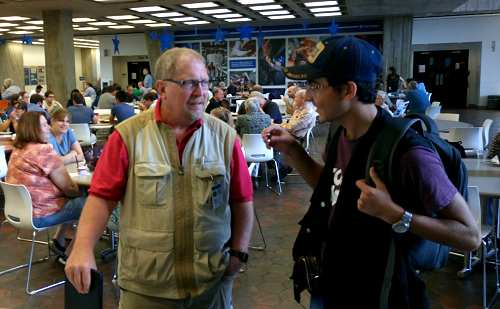
Amine chatting with our docent Shaw Robert at lunch time.
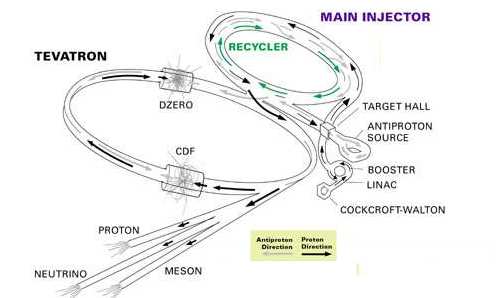
The overall acceleration chain at Fermilab
|
At the Tevatron and the D-Zero detector |
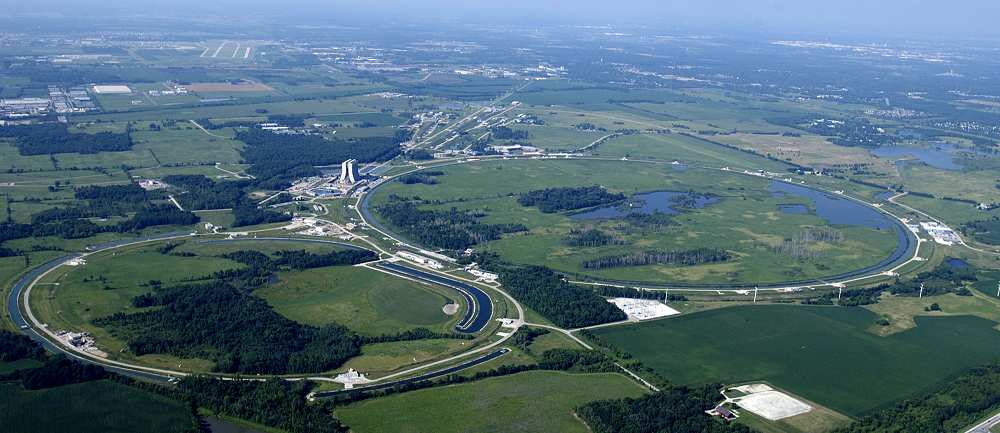
The Tevatron colliding- beam storage ring or collider is a huge particle accelerator of 6.3km in circonference used to produce beams of protons and anti protons at very close to the speed of light, making the two beams collide with each other at an energy of 2TeV. It can be seen as the ring at left while the ring at left is the main injector. Notice the Wilson Hall next to the Tevatron's ring. Another view here and here. |
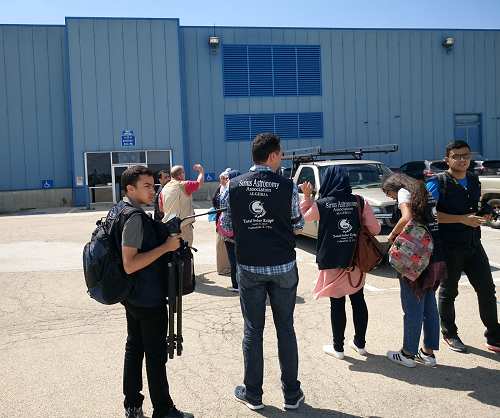
Entering the D-Zero detector building associated with the Tevatron underground. The other detector is the CDF and it is completely shut down. |
.
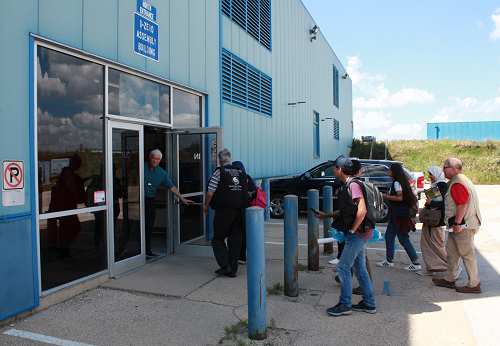
Welcomed by Ron Lipton, head of the Detector R&D division at Fermilab.
|
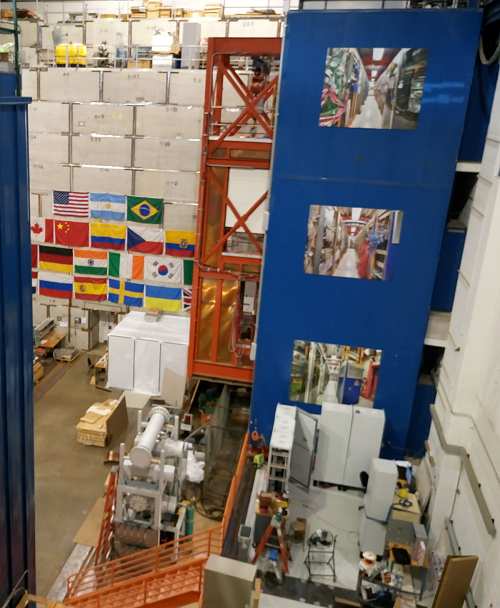
The accelerator as well as the detector are underground. Notice the concrete blocks in the back behind the flags in order to provide some protection from the Linac's radiation. |
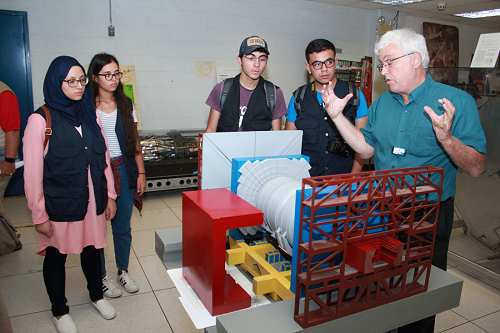
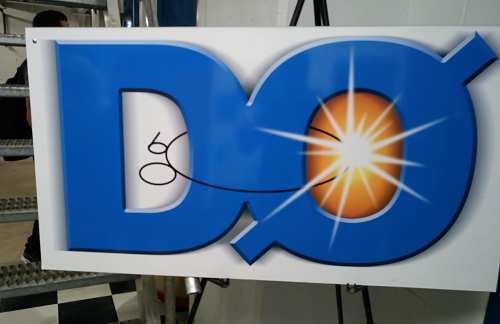 |
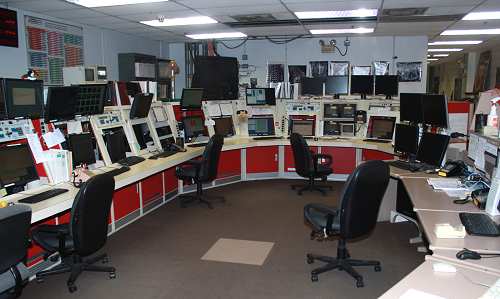
The Tevatron's control room now just running simulations. |
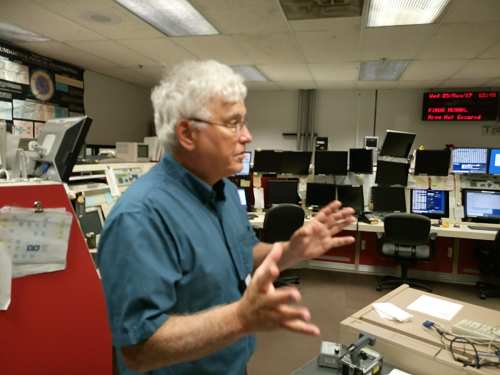
Inside the control room. |
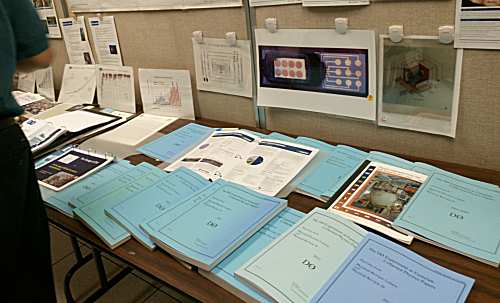 Some of the huge scientific output of the D-Zero detector displayed here. It includes the top quark discovery. It is also at Fermilab that the tau neutrino was detected with DONUT.
Some of the huge scientific output of the D-Zero detector displayed here. It includes the top quark discovery. It is also at Fermilab that the tau neutrino was detected with DONUT. |
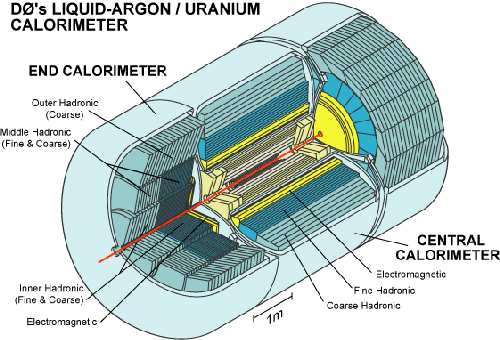
That's the cutaway of the mammouth 5500 tons D-Zero detector |
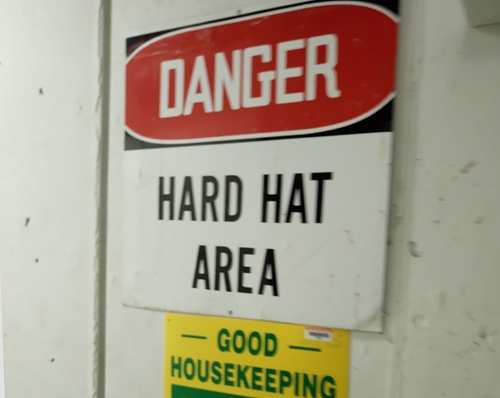 |
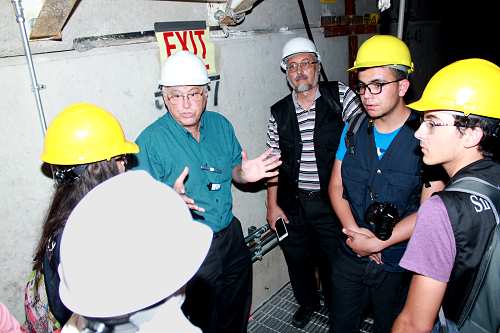 |
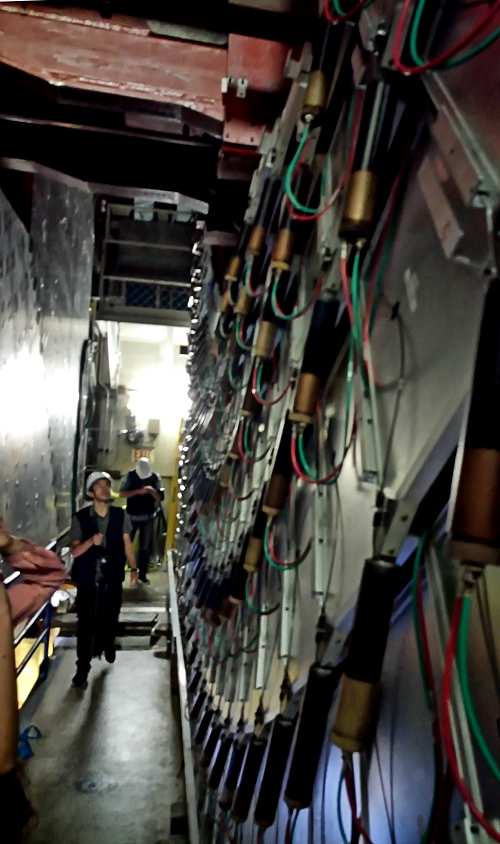
The huge end barrel wheel of the muon detector, part of the D-Zero. |
|
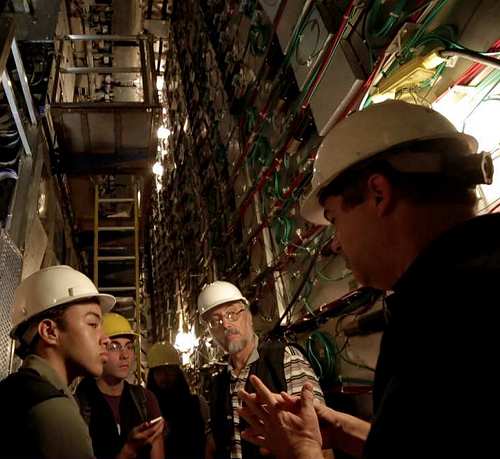
Inside the three-story high D-Zero detector. An incredible piece of precision engineering. |
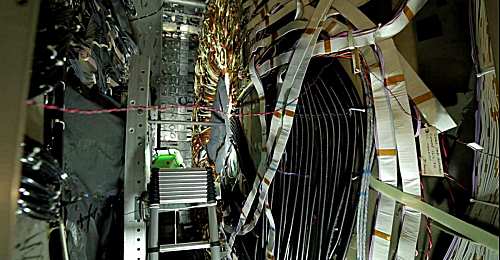
The outer part of the calorimeter at right (Mostly Uranium matrix)
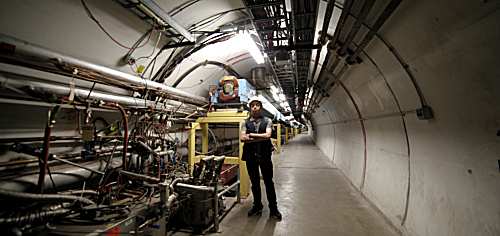
Aymen proudly standing in front of a section of the Tevatron .
|
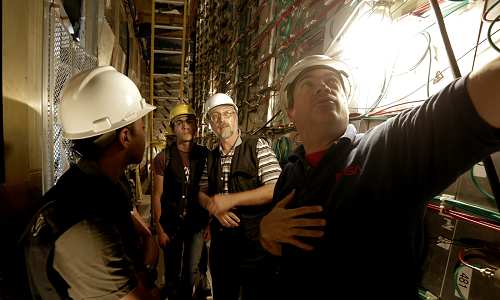
James Santucci being our guide for the D-Zero detector tour. |
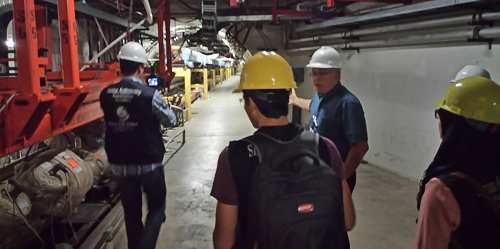
|
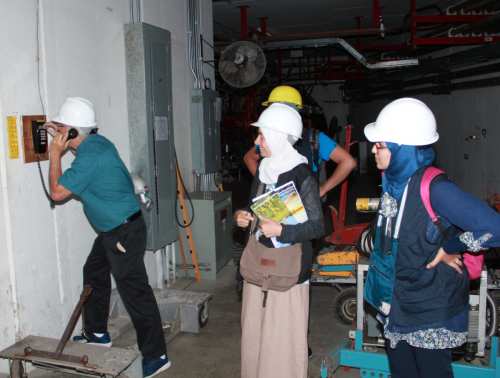
Getting stuck inside the Tevatron tunnel. |
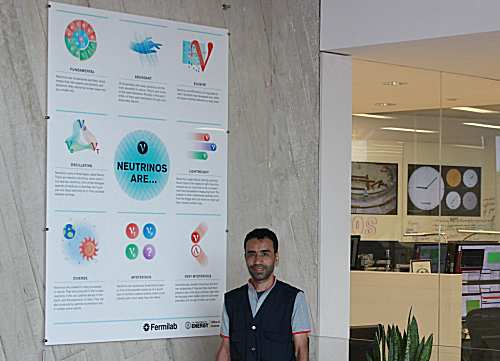 The neutrino story is a fascinating one but not part of this adventure. Most of the efforts of Fermilab are now indeed devoted to that physics. MicroBoNE (Micro Booster Neutrino Experiment), NOνA (NuMIOff-Axis νe Appearance) and SeaQuest. while MINOS, MiniBooNE and SciBooNE have been already completed. The neutrino story is a fascinating one but not part of this adventure. Most of the efforts of Fermilab are now indeed devoted to that physics. MicroBoNE (Micro Booster Neutrino Experiment), NOνA (NuMIOff-Axis νe Appearance) and SeaQuest. while MINOS, MiniBooNE and SciBooNE have been already completed. |
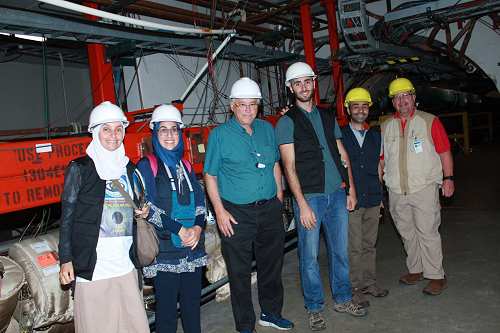
All smiles inside the Tevatron accelerator tunnel. |
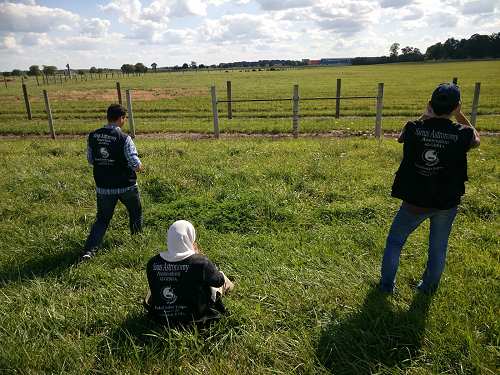
What are they watching in the prairie? The answer below. |
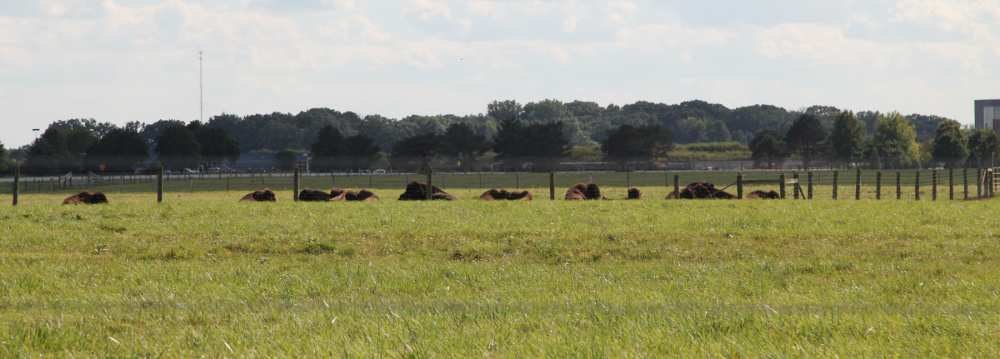
The American bisons which almost got extincted from over-hunting have been reintroduced in the "reserve". That is, the Tevatron ring space above plays the role of a prairie's habitat! Unfortunately they stayed at distance. |
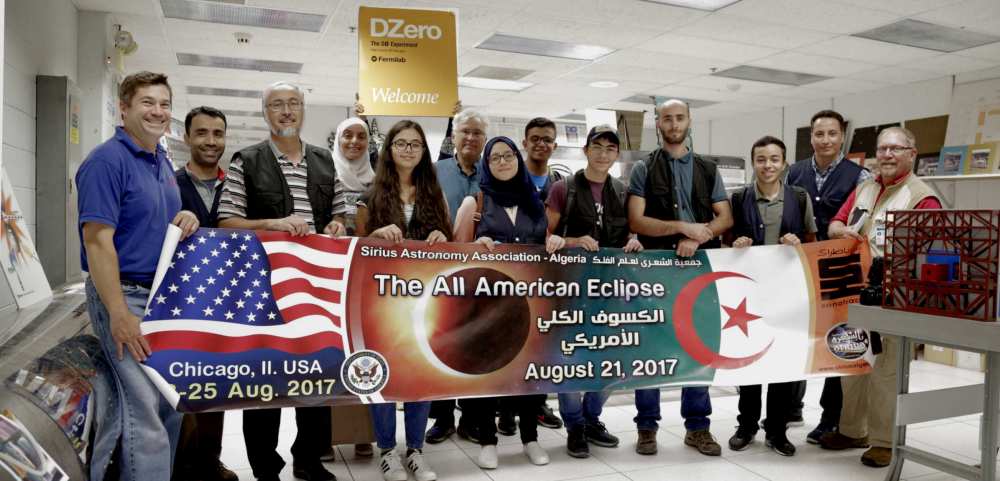
Last stand inside the D-Zero detector area. |
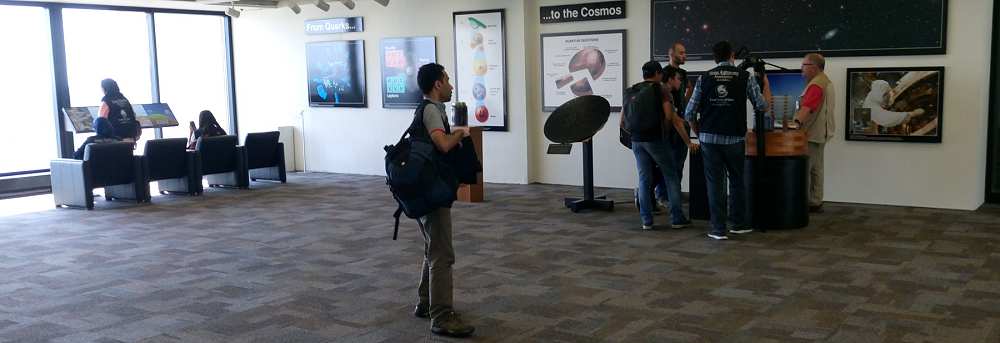 |
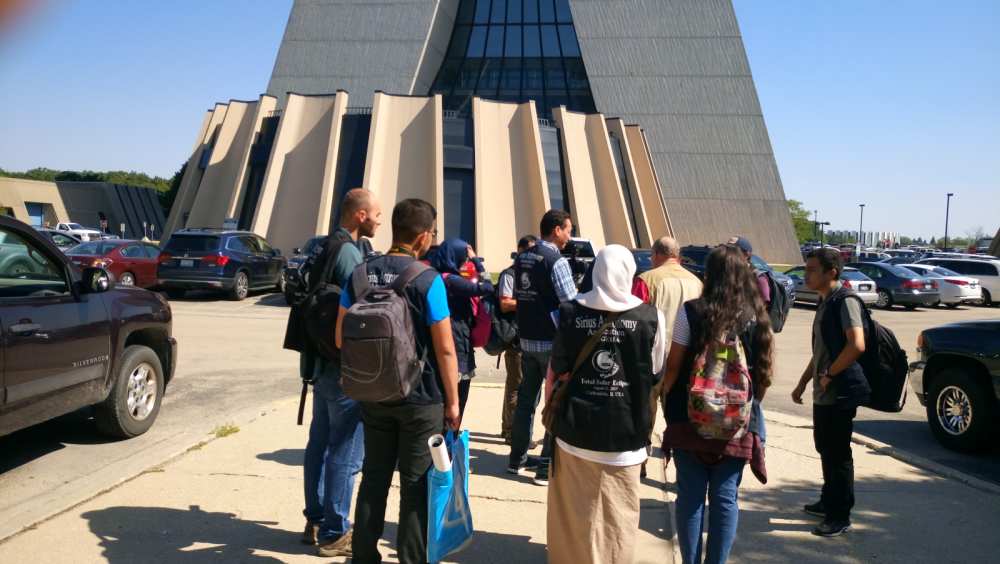
Leaving Fermilab. |



